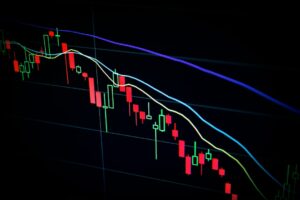The forex market, being a decentralized market, operates 24 hours a day, five days a week. This unique characteristic is one of the reasons why forex trading has become increasingly popular among traders worldwide. However, despite the market’s continuous operation throughout the week, there are specific hours when trading activity is at its peak, and other times when it slows down significantly. In this comprehensive guide, we will discuss the trading hours of the forex market, including the opening and closing times of different sessions, as well as the factors that influence market activity during these hours.
Firstly, it’s important to understand the concept of forex trading sessions. The forex market is divided into four major trading sessions: the Sydney session, the Tokyo session, the London session, and the New York session. These sessions represent the major financial centers around the world, where most of the trading activity takes place. Each session has its own distinct characteristics, which influence the liquidity and volatility of the market during those hours.
The Sydney session kicks off the trading week, starting at 10:00 PM GMT on Sunday and closing at 7:00 AM GMT on Monday. This session is relatively quiet compared to the others, as it overlaps with the end of the Asian session and the beginning of the European session. During this time, the AUD, NZD, and JPY currency pairs are most actively traded, as these economies are directly impacted by the Sydney session.
Next, the Tokyo session begins at 12:00 AM GMT and ends at 9:00 AM GMT. This session is known for its high volatility, as it overlaps with the Sydney session and the opening of the European session. The JPY currency pairs are particularly active during this session, as well as other major currency pairs involving the USD and EUR.
The London session is considered the most important trading session, as it represents the financial hub of Europe. It starts at 8:00 AM GMT and closes at 5:00 PM GMT. This session overlaps with the end of the Tokyo session and the beginning of the New York session, resulting in high liquidity and increased trading opportunities. Major currency pairs involving the GBP, EUR, and USD are most actively traded during this session.
Lastly, the New York session starts at 1:00 PM GMT and ends at 10:00 PM GMT. This session is known for its high volatility, as it overlaps with the end of the London session and the beginning of the Sydney session. The USD currency pairs are particularly active during this time, as it represents the financial hub of the United States.
While these trading sessions provide a general guideline for when the forex market is most active, it’s important to note that there are overlapping periods throughout the day where multiple sessions are open simultaneously. These overlapping periods, such as the London-New York overlap, are highly liquid and offer favorable trading conditions.
It’s also worth mentioning that certain economic events and news releases can significantly impact market activity and volatility outside of regular trading hours. These events, such as central bank announcements, economic data releases, and geopolitical developments, can cause sudden price movements and increased trading opportunities. Therefore, traders should always stay informed about upcoming events and adjust their trading strategies accordingly.
In conclusion, the forex market operates 24 hours a day, five days a week, providing ample opportunities for traders worldwide. Understanding the trading sessions and their characteristics is crucial for maximizing trading opportunities and managing risk effectively. By aligning your trading activities with the most active sessions and staying informed about significant economic events, you can navigate the forex market with confidence and increase your chances of success.





